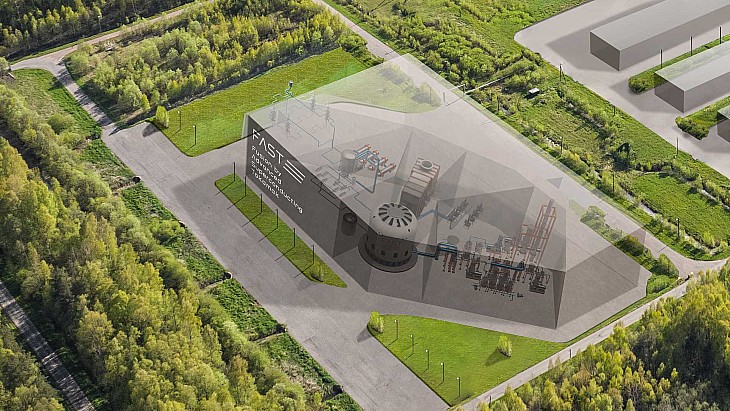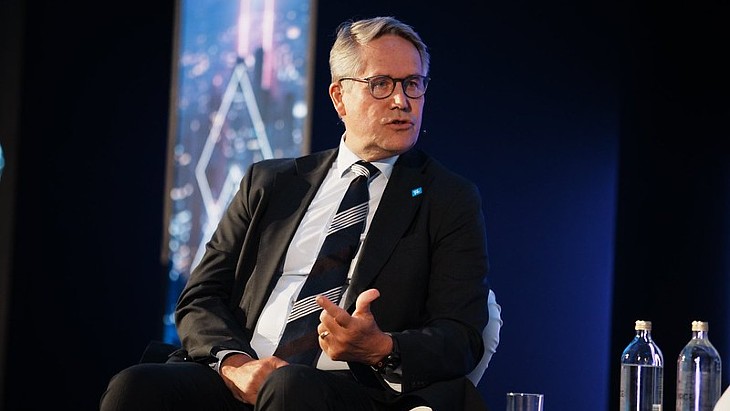The future of nuclear energy in a carbon-constrained world, released today at an event in London, analyses the reasons behind a slowdown in nuclear energy growth and outlines measures that could be taken to arrest or reverse that trend, including moves to reduce the cost of building new nuclear capacity and creating a level playing field that would allow all low-carbon generation technologies to compete on their merits.
The study was led by MIT researchers in collaboration with Idaho National Laboratory and the University of Madison-Wisconsin, and is the eighth in a series exploring the role of technologies in meeting rapidly growing energy demand in a carbon-constrained world. The studies are intended to serve as guides to researchers, policymakers and industry.
"Our analysis demonstrates that realising nuclear energy's potential is essential to achieving a deeply decarbonised energy future in many regions of the world," study co-chair Jacopo Buongiorno, associate department head of the Nuclear Science and Engineering Department at MIT, said. "Incorporating new policy and business models, as well as innovations in construction that may make deployment of cost-effective nuclear power plants more affordable, could enable nuclear energy to help meet the growing global demand for energy generation while decreasing emissions to address climate change," he added.
The world is facing the challenge of drastically reducing emissions of greenhouse gases while simultaneously expanding energy access and economic opportunity to billions of people, the report notes. The electricity sector, with current emissions averaging about 500 grams carbon dioxide per kilowatt hour (gCO2/kWh), has been widely identified as an early candidate for deep decarbonisation, with 2050 targets as low as 50 gCO2/kWh widely discussed in international policy deliberations.
For most regions, meeting projected 2050 demands while reducing emissions will require a mix of electrical generation assets that is different to the current system, the report notes.
"While a variety of low- or zero-carbon technologies can be employed in various combinations, our analysis shows the potential contribution nuclear can make as a dispatchable low-carbon technology. Without that contribution, the cost of achieving deep decarbonisation targets increases significantly," the study finds.
Despite this promise, the prospects for the expansion of nuclear energy remain "decidedly dim" in many parts of the world, the study finds. The fundamental reason for this, it says, is cost, with new nuclear plants becoming costlier: a "disturbing trend [which] undermines nuclear energy's potential contribution and increases the cost of achieving deep decarbonisation".
To address this, the report discusses recommendations for nuclear plant construction, current and future reactor technologies, business models and policies, and reactor safety, regulation and licensing.
Changes in reactor construction, with an increased focus on using proven project and construction management practices to ensure the completion of projects on time and within budget, and the deployment of serially manufactured, standardised plants, would help to address cost concerns. This is applicable across all reactor concepts and designs, the study notes.
"Cost-cutting opportunities are pertinent to evolutionary Generation-III LWRs, small modular reactors, and Generation-IV reactors. Without design standardisation and innovations in construction approaches, we do not believe the inherent technological features of any of the advanced reactors will produce the level of cost reductions needed to make nuclear electricity competitive with other generation options," it says.
Public concern and policy issues
As well as cost, the growth of nuclear energy has been hindered by public concerns about the consequences of severe accidents. A shift towards reactor designs incorporating inherent and passive safety features - which could include core materials with high chemical and physical stability and engineered safety systems that require limited or no emergency AC power and minimal external intervention - are recommended to address safety concerns. As well as reducing the probability of severe accidents and mitigating offsite consequences in the event of an incident, such designs can also ease the licensing of new plants and accelerate their global deployment, the study finds.
The study's final recommendations are actions to be taken by policymakers, including the creation of a level playing field where factors such as the value of reducing CO2 emissions, which are external to the market, are taken into account.
"Policies that foreclose a role for nuclear energy discourage investment in nuclear technology. This may raise the cost of decarbonisation and slow progress towards climate change mitigation goals," it notes.
Incorporating CO2 emissions into electricity costs - for example through the implementation of zero-emission credits such as those introduced in New York and New Jersey - would recognise value to all "climate-friendly" energy technologies, it says.
"Nuclear generators, both existing plants and new builds, would be among the beneficiaries of a level, competitive playing field," the study says.
Governments should establish and support sites where companies can deploy prototype reactors for testing and operation, the study recommends. They should also establish funding programmes to support the development, demonstration and deployment of new nuclear technologies through: shared regulatory licensing costs; shared research and development costs; funding for the achievement of technical milestones; and production credits to reward the successful demonstration of new designs.

.jpg)



_82983.jpg)
_34792.jpg)
_16403_79272.jpg)


_76087_55556.jpg)



